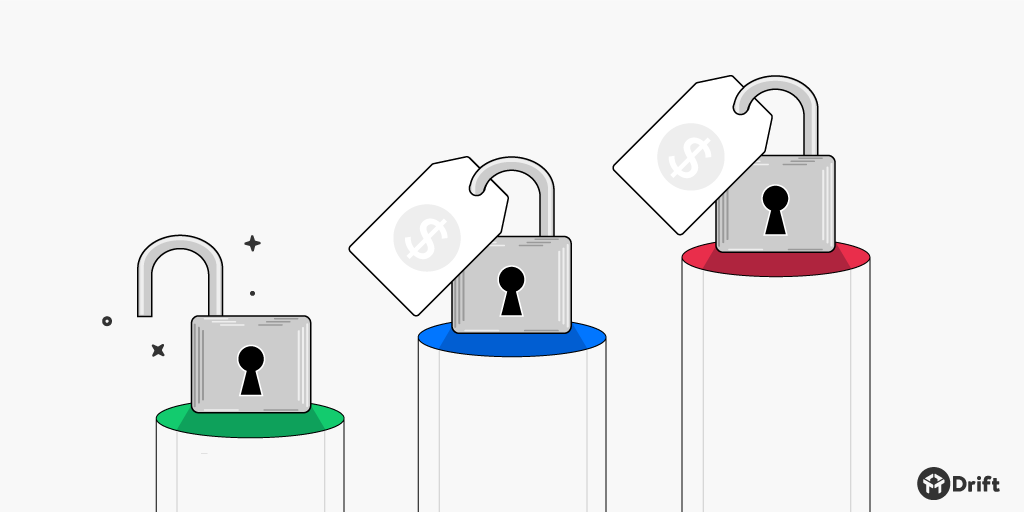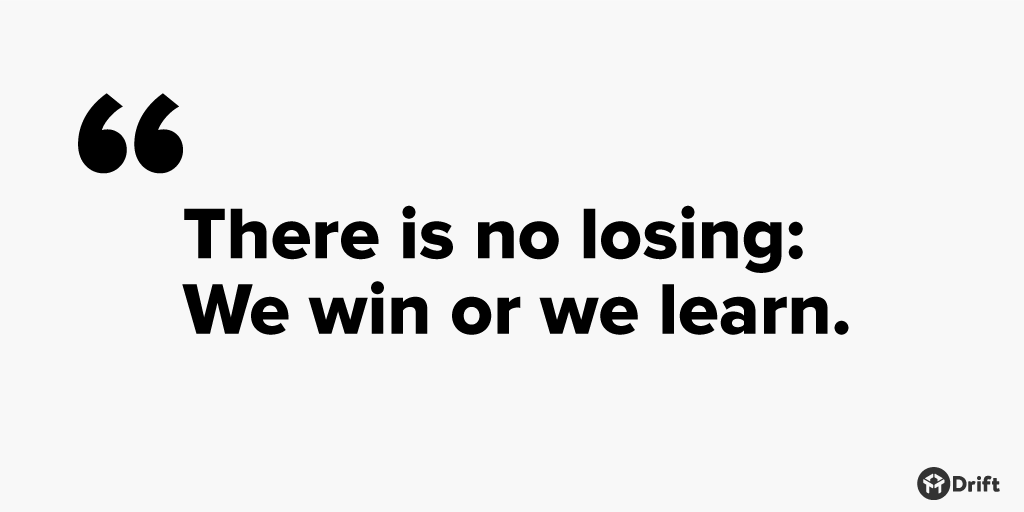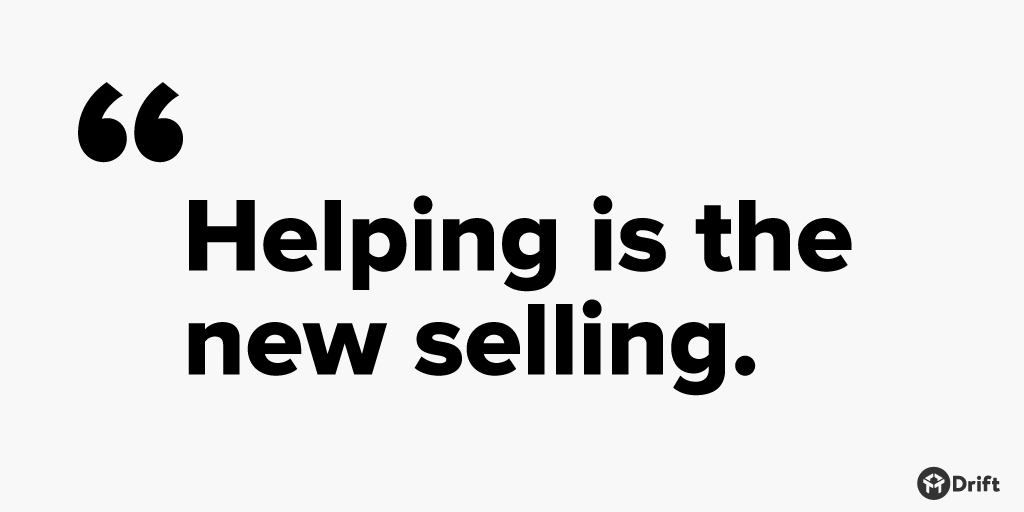
There’s one thing I’ve learned about pricing over the years: it’s always a topic.
Most product-focused companies — whether they’re SaaS companies, or hardware companies — will be thinking about pricing and value non-stop.
And the same is true at Drift.
We’ve been thinking about pricing and value a lot and it seems to come up each month at our company meetings.
These meetings give us the opportunity to bring everybody together as a team. We sit down, we go over the good, the bad, we talk about what’s happening, and we see what we can learn and how we can improve.
So we either win or we learn in these meetings (there’s no losing; we win or we learn).

And during our last meeting, one of the big topics (aside from chatbots) was — yep, you guessed it — pricing.
We talked about how modern businesses should be pricing their products — and I shared a story about three of the products our team is using here at Drift internally as examples.
We talked about this on our podcast here at Drift. You can listen below or just search for Seeking Wisdom in your favorite podcast app:
1. Trello
For my first example, I showed the team a bill I had just gotten from Trello. For those who don’t know, Trello is a great product management tool. We use it. We love it. Matt, our product manager, is a super-fan. He bleeds Trello.
But I still had to ask the team:
“Do you know how much this bill for Trello is?
And then I put up the slide: $1,700 per year.
Whoa.
For context: There are only around 20 of us here at Drift.
And while all of us use Trello, most of it use it passively. There are only a couple of people using it day-in, day-out.
Meanwhile, however, we were being charged based on the number of people that we had in the paid plan. So clearly there was a disconnect between the price we were paying and the value we were getting.
Now, when it comes to pricing, Trello does a great thing — it’s something that Slack does as well and it’s something that we do at Drift — which is if you’re not using a certain number of users or contacts, we will take that off your bill because we believe in fair billing. We don’t charge you for what you don’t use.
But despite having this fair billing practice at Trello, that $1,700 bill got my attention.
So I sent this bill to Matt (the Trello super-fan) and I asked him, “Should we pay this?”
Matt went off and discussed it with our product designers, and when they came back, they recommended that we should downgrade to the free version of Trello.
2. Slack
Around that same time, I got a bill from Slack.
We use Slack and we love Slack, just like we love Trello.
So I got this Slack bill for around $1,300 for an annual plan. And when I got it I immediately thought to myself:
“PAY!”
I thought, “This is cheap. This awesome.” So I paid the bill, and I was happy to pay it.
It could’ve been three times as much (note to Slack: please don’t do that) and I would’ve paid it.
Why? Because I see the value.
We use Slack every day in our business, and as an internal tool, I can’t imagine it going away.
Contrast that to Trello, which is something that we love from a brand standpoint. We’re all fans of it, we all use it (not as much as Slack, but we use it). And yet even Matt — the super-fan — told us that we should downgrade to free.
His recommendation that we downgrade stemmed from that fact that we weren’t using any of the features that we were being charged for.
There was misalignment between the price and the value we were receiving.
This got me thinking about a quote I had read from Leadpages co-founder and CEO, Clay Collins:
Most SAAS businesses operate under the gym membership model: they make much of their money from customers who barely use the product but don’t bother to quit…In fact, most gyms would go out of business if every card-carrying member made a weekly visit. Their entire system depends on non-consumption.
And some businesses today don’t even send you a bill each month — they just charge your credit card. They don’t really care if you’re using their product or not. They will just keep billing you until you speak up and then churn.
We’ve be thinking a lot about the type of business we want to be here at Drift, and the type of relationship that we want to have with our customers — and how we want our pricing model to reflect that.
Ultimately, we want to build a pricing model that aligns us with the success of our customers — not one where we’re making money off of the people who never even use our product.
That’s exactly why we have a free plan at Drift. We want to take non-consumption off the table.
We only want to charge people for the success that they’re having with our product — and we want to align how much we charge with the success they’re having.
3. FullStory
In addition to Trello and Slack, there was a third SaaS company I mentioned during our last team meeting: FullStory.
Matt and our product designer Elyse are two of the biggest FullStory fans.
Each month, we get a bill from FullStory for $200.
So $2,400 per year — which is more than Slack, and more than Trello.
But unlike Slack and Trello, only two people on our team use it, and I wasn’t sure of the value.
So every month, I email Matt and Elyse and asked them, “Do you still need FullStory?”
And every month they reply, “Hell yes,” and they tell me that they’ll pay for it themselves if they need to because they love it so much.
The point here is that with FullStory — despite Matt and Elyse finding it incredibly useful — the value that it’s bringing is not apparent to the entire organization. It’s not transparent in the value it’s bringing. So I have to ask that question each month — but then the answer is obvious.
Final Thought
As we’re growing our company, we’re thinking about how we can align our pricing with the value we’re delivering to customers.
I’m sure our pricing will continue to change as we learn more and we become more educated. But we want to develop this model based (and we think that more and more new businesses are going to move to this model) on taking non-consumption off the table.
Software is racing toward free. So you should really only charge those people who are actively using it and deriving value from that software.
It’s a great model for customers, since prices are aligned with their success. But it’s also great from a sales perspective, since you’re not attracting customers who are non-consuming. After all, those non-consuming customers are the most likely to churn.
Under the new model, we want to help upgrade people who raise their hands on the free plan — meaning they’re actively using our products already and then they raise their hands to ask for more capabilities.
So at Drift, we’re looking to hire non-traditional salespeople. We’re looking for salespeople who are focused on helping.

Just as customer engagement is the new marketing, helping is the new selling. And so that means the salespeople, as well as the sales model, have to change to match that.
Thanks to Patrick at Price Intelligently for his help with our pricing model here at Drift.





